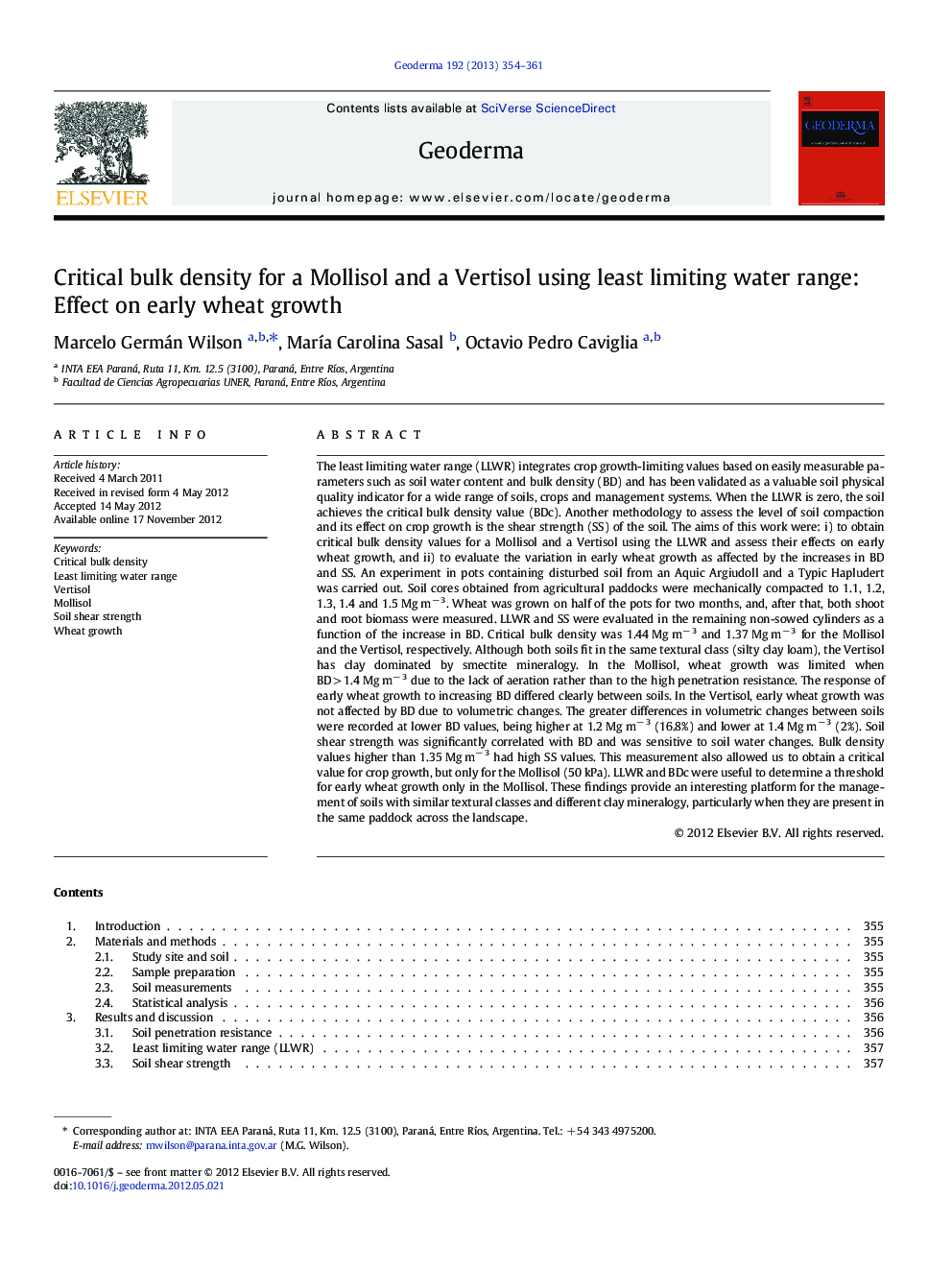| Article ID | Journal | Published Year | Pages | File Type |
|---|---|---|---|---|
| 4573784 | Geoderma | 2013 | 8 Pages |
The least limiting water range (LLWR) integrates crop growth-limiting values based on easily measurable parameters such as soil water content and bulk density (BD) and has been validated as a valuable soil physical quality indicator for a wide range of soils, crops and management systems. When the LLWR is zero, the soil achieves the critical bulk density value (BDc). Another methodology to assess the level of soil compaction and its effect on crop growth is the shear strength (SS) of the soil. The aims of this work were: i) to obtain critical bulk density values for a Mollisol and a Vertisol using the LLWR and assess their effects on early wheat growth, and ii) to evaluate the variation in early wheat growth as affected by the increases in BD and SS. An experiment in pots containing disturbed soil from an Aquic Argiudoll and a Typic Hapludert was carried out. Soil cores obtained from agricultural paddocks were mechanically compacted to 1.1, 1.2, 1.3, 1.4 and 1.5 Mg m− 3. Wheat was grown on half of the pots for two months, and, after that, both shoot and root biomass were measured. LLWR and SS were evaluated in the remaining non-sowed cylinders as a function of the increase in BD. Critical bulk density was 1.44 Mg m− 3 and 1.37 Mg m− 3 for the Mollisol and the Vertisol, respectively. Although both soils fit in the same textural class (silty clay loam), the Vertisol has clay dominated by smectite mineralogy. In the Mollisol, wheat growth was limited when BD > 1.4 Mg m− 3 due to the lack of aeration rather than to the high penetration resistance. The response of early wheat growth to increasing BD differed clearly between soils. In the Vertisol, early wheat growth was not affected by BD due to volumetric changes. The greater differences in volumetric changes between soils were recorded at lower BD values, being higher at 1.2 Mg m− 3 (16.8%) and lower at 1.4 Mg m− 3 (2%). Soil shear strength was significantly correlated with BD and was sensitive to soil water changes. Bulk density values higher than 1.35 Mg m− 3 had high SS values. This measurement also allowed us to obtain a critical value for crop growth, but only for the Mollisol (50 kPa). LLWR and BDc were useful to determine a threshold for early wheat growth only in the Mollisol. These findings provide an interesting platform for the management of soils with similar textural classes and different clay mineralogy, particularly when they are present in the same paddock across the landscape.
► Soil bulk density affected soil penetration resistance and soil shear strength. ► Critical soil bulk density was 1.44 in the Mollisol and 1.37 Mg m–3 in the Vertisol. ► Clay mineralogy led to a different response in the volumetric change by wetting. ► Wheat growth was related to critical soil bulk density in the Mollisol. ► Wheat growth was unaffected by soil bulk density in the Vertisol.
